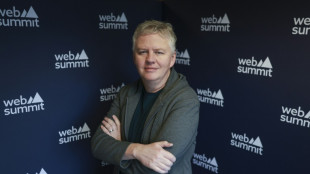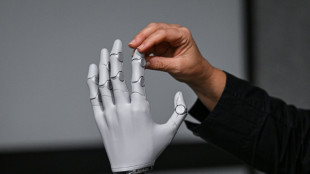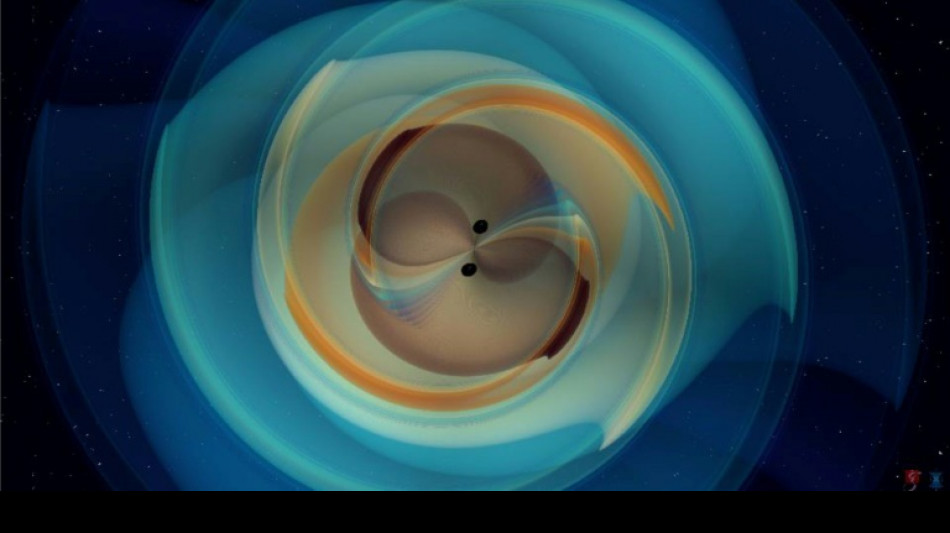
-
 Brazilian 'Superman' cheers child cancer patients in Ghana
Brazilian 'Superman' cheers child cancer patients in Ghana
-
India close in on win over South Africa after Jadeja heroics
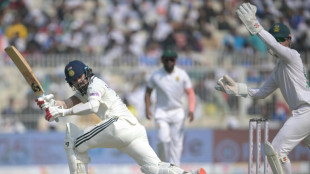
-
 Huge explosions rock industrial area near Argentina's capital
Huge explosions rock industrial area near Argentina's capital
-
Bezzecchi takes pole for Valencia sprint and MotoGP

-
 Dominant Shiffrin leads after first slalom run in Levi
Dominant Shiffrin leads after first slalom run in Levi
-
Nine killed in accidental explosion at Indian Kashmir police station

-
 Climate protesters to rally at COP30's halfway mark
Climate protesters to rally at COP30's halfway mark
-
Fighting South Africa lose Rickelton after India 189 all out

-
 Harmer leads South Africa fightback as India 189 all out
Harmer leads South Africa fightback as India 189 all out
-
Prison looms for Brazil's Bolsonaro after court rejects his appeal
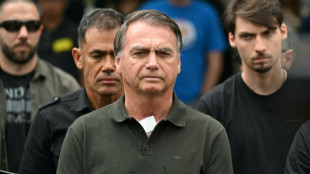
-
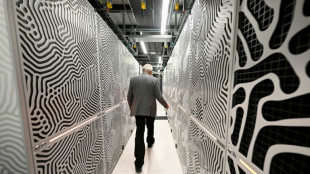 EU bows to pressure on loosening AI, privacy rules
EU bows to pressure on loosening AI, privacy rules
-
India close in on lead despite South African strikes
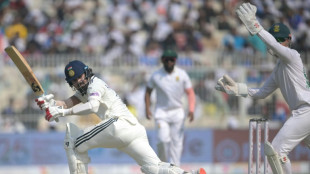
-
 Curry's 49 points propel Warriors in 109-108 win over Spurs
Curry's 49 points propel Warriors in 109-108 win over Spurs
-
NZ boxer Parker denies taking banned substance after failed test

-
 Australia setback as Hazlewood ruled out of 1st Ashes Test
Australia setback as Hazlewood ruled out of 1st Ashes Test
-
Australia pace spearhead Josh Hazlewood ruled out of 1st Ashes Test

-
 UN Security Council to vote Monday on Trump Gaza plan
UN Security Council to vote Monday on Trump Gaza plan
-
Japan's Tomono leads after men's short program at Skate America

-
 China tells citizens to avoid Japan travel as Taiwan row grows
China tells citizens to avoid Japan travel as Taiwan row grows
-
Purdue Pharma to be dissolved as US judge says to approve bankruptcy

-
 Iran's first woman orchestra conductor inspires
Iran's first woman orchestra conductor inspires
-
Wood gets all-clear in boost for England

-
 Golf's world No. 8 Thomas has back surgery
Golf's world No. 8 Thomas has back surgery
-
Rebooted Harlem museum celebrates rise of Black art

-
 'Desperation in the air': immigrant comics skewer Trump crackdown
'Desperation in the air': immigrant comics skewer Trump crackdown
-
UN regulator says shipping still wants to decarbonize -- despite US threats
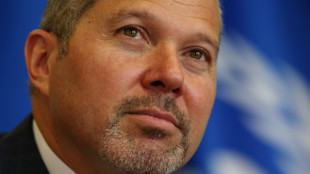
-
 Grant, Kim share halfway lead in LPGA Annika tournament
Grant, Kim share halfway lead in LPGA Annika tournament
-
Musk's Grokipedia leans on 'questionable' sources, study says

-
 Trump signs order to lower tariffs on beef, coffee, other goods
Trump signs order to lower tariffs on beef, coffee, other goods
-
Croatia qualify for 2026 World Cup, Netherlands close, Germany in limbo

-
 'Last Chance U' coach dies after shooting: US police
'Last Chance U' coach dies after shooting: US police
-
Sinner completes perfect ATP Finals group stage, Auger-Aliassime reaches last four

-
 Woltemade sends Germany past Luxembourg in World Cup qualifier
Woltemade sends Germany past Luxembourg in World Cup qualifier
-
Croatia qualify for 2026 World Cup with 3-1 win over Faroes

-
 Kai Trump makes strides but still misses cut in LPGA debut
Kai Trump makes strides but still misses cut in LPGA debut
-
Return to bad days of hyperinflation looms in Venezuela

-
 US airspace recovers as budget shutdown ends
US airspace recovers as budget shutdown ends
-
Russia strike on Kyiv apartment block kills six, Ukraine says

-
 Arrest made in shooting of 'Last Chance U' coach: US police
Arrest made in shooting of 'Last Chance U' coach: US police
-
At COP30, senator warns US 'deliberately losing' clean tech race with China

-
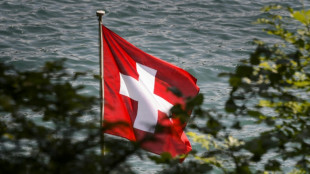 US, Switzerland say deal reached on trade and tariffs
US, Switzerland say deal reached on trade and tariffs
-
Fossil fuel lobbyists out in force at Amazon climate talks: NGOs

-
 Returning Alldritt blames himself for France axing
Returning Alldritt blames himself for France axing
-
Stocks struggle on US rates, tech rally fears

-
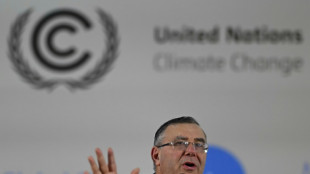 A rare oil CEO shows up at COP30, spars with activists
A rare oil CEO shows up at COP30, spars with activists
-
Trump demands probe into Epstein links to Bill Clinton

-
 England great Anderson says 'weak' Australia still Ashes favourites
England great Anderson says 'weak' Australia still Ashes favourites
-
Indigenous protesters disrupt UN climate summit again

-
 Gun salutes for King Charles III as he marks 77th birthday
Gun salutes for King Charles III as he marks 77th birthday
-
Ford urges England to make their own New Zealand history


Gravitational waves from black hole smash confirm Hawking theory
Ripples in spacetime sent hurtling through the universe when two black holes smash into each other -- a phenomenon predicted by Albert Einstein -- have confirmed a theory proposed by fellow physicist Stephen Hawking over 50 years ago, scientists announced Wednesday.
These ripples, which are called gravitational waves, were detected for the first time in 2015 by the Laser Interferometer Gravitational-Wave Observatory (LIGO) in the United States.
In his 1916 theory of general relativity, Einstein predicted that the cataclysmic merger of two black holes would produce gravitational waves that would ripple across the universe and eventually arrive at Earth.
On January 14 this year, LIGO detected another of these signals from the distant universe.
That is no longer such a surprise.
Scientists in the LVK collaboration -- a vast network of scientists whose facilities includes gravitational wave detectors in Italy and Japan -- now record a new black hole merger roughly once every three days.
However January was "the loudest gravitational wave event we have detected to date," LIGO member Geraint Pratten of the University of Birmingham, England, said in a statement.
- From a whisper to a shout -
"It was like a whisper becoming a shout," added the co-author of a new study in the Physical Review Letters.
The latest event bore striking similarities to the first one detected a decade ago.
Both involved collisions of black holes with masses of between 30-40 times that of our Sun. And both smash-ups occurred around 1.3 billion light years away.
But thanks to technological improvements over the years, scientists are now able to greatly reduce the background noise, giving them far clearer data.
This allowed the researchers to confirm a theory by another great physicist.
In 1971, Stephen Hawking predicted that a black hole's event horizon -- the area from which nothing including light can escape -- cannot shrink.
This means that when two black holes merge, the new monster they create must have the same or larger surface area than the pair started out with.
Scientists analysing January's merger, called GW250114, were able to show that Hawking was right.
- Ringing like a struck bell -
The black holes collectively started out at 240,000 square kilometres wide, which is roughly the size of the United Kingdom.
But after the collision, the resulting mega-black hole took up 400,000 square kilometres -- about the size of Sweden.
The California Institute of Technology said that working out the final merged surface area was "the trickiest part of this type of analysis".
"The surface areas of pre-merger black holes can be more readily gleaned as the pair spiral together, roiling space-time and producing gravitational waves," it said in a statement.
But the signal gets muddier once the black holes start combining into a single new monster.
This period is called the "ringdown phase", because the merged black hole rings like a struck bell -- a phenomenon that Einstein also predicted.
The scientists were able to measure different frequencies emanating from this rung bell, allowing them to determine the size of the new post-merger black hole.
- Kerr theory vindicated -
This also enabled them to confirm the event aligned with another theory, made by New Zealand mathematician Roy Kerr in 1963.
Kerr predicted that "two black holes with the same mass and spin are mathematically identically," a feature unique to black holes, Maximiliano Isi of Columbia University said in a statement.
Gregorio Carullo of the University of Birmingham said that "given the clarity of the signal produced by GW250114, for the first time we could pick out two 'tones' from the black hole voices and confirm that they behave according to Kerr's prediction."
Scientists are working to find out more about black hole mergers, with several new gravitational wave detectors planned for the coming years -- including one in India.
U.Shaheen--SF-PST

